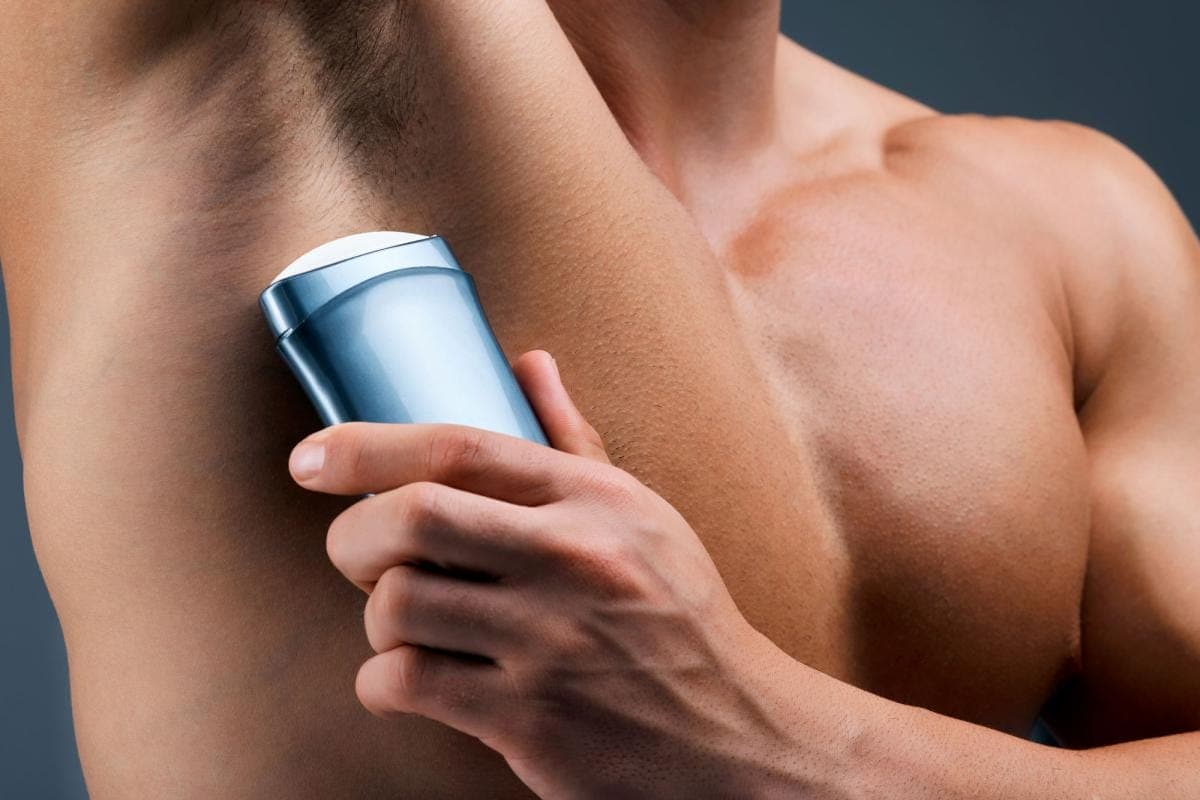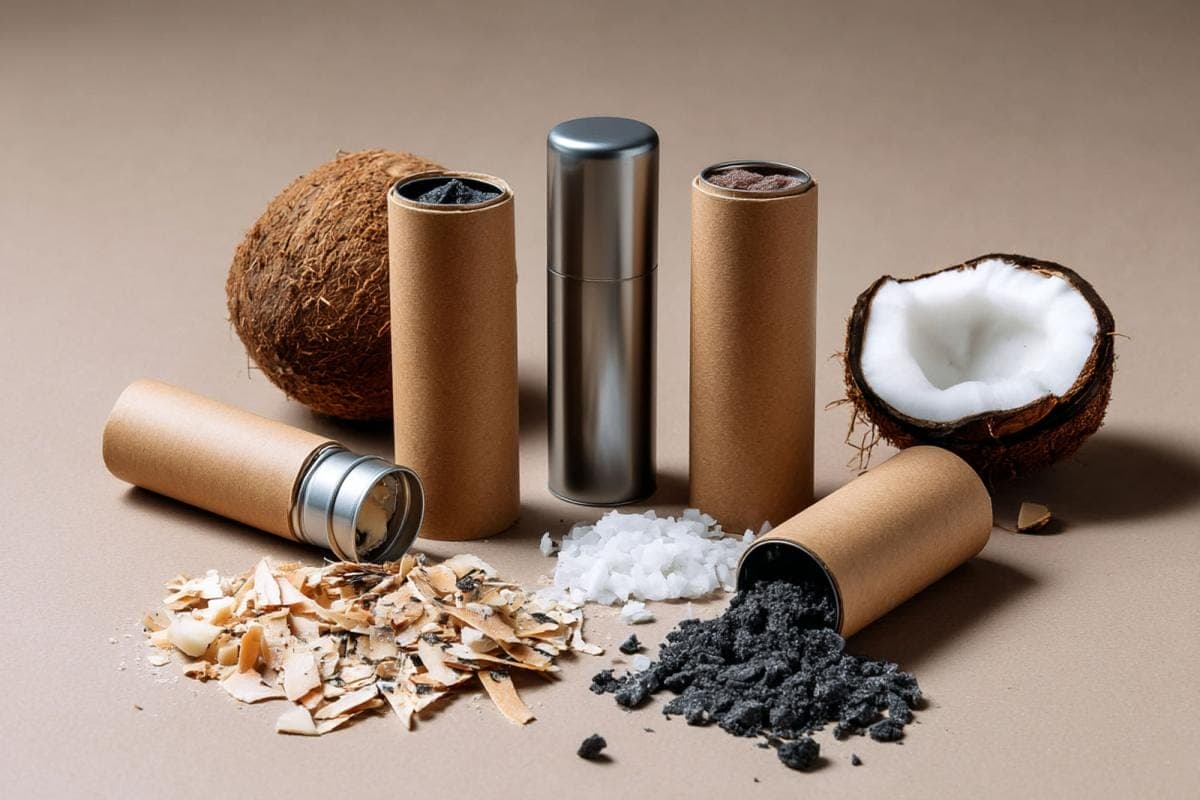Beauty, Skincare, Trends & Opinions, Wellness
Sweat Happens A Guide to the Best Natural Deodorants and Why They Keep You Fresh
If you click on links we provide, we may receive compensation.
I still remember the afternoon our creative director jogged back from lunch and drifted through the studio like a human weather front. Everyone tried to keep typing politely while the cloud of salt and stale cumin grew wider. He was wearing a respected antiperspirant – one laced with aluminum salts that halt perspiration by plugging sweat ducts. The brand had promised an invisible shield. What we inhaled felt more like betrayal. Moments like that pushed me to explore formulas that neutralize odor instead of damming the body’s cooling system, and the search led straight to natural deodorants.
Conventional sticks and sprays treat sweat as the enemy. They rely on aluminum chlorohydrate or zirconium to form tiny plugs inside apocrine gland openings. The mechanism works, but it also alters the skin’s microbiome and leaves chalky buildup on dark shirts. Natural products take a different route. They let moisture escape while focusing on the bacteria that turn fresh perspiration into funky acids. By shifting from blockage to bio-balance, these formulas can keep you fragrant without a clinical chemistry set in your armpit.
Consumers seem to agree. The global organic deodorant market reached roughly USD 138 million in 2024 and is climbing at a projected 14.8 percent annual rate through 2030, according to Grand View Research. Shelves once ruled by neon-colored antiperspirants now share space with cardboard tubes of plant butter, charcoal cream jars, and refillable magnesium balms. Behind the surge is a mix of health concerns, eco awareness, and simple curiosity about whether clay and coconut oil can really handle a humid commute.
Why Sweat Smells
Perspiration itself is almost odorless. The apocrine glands under each arm pump out a protein-rich fluid, and eccrine glands add watery saline to cool the skin. The stench begins when resident microbes feast on those proteins and secrete smaller, volatile molecules such as 3-methyl-2-hexenoic acid. Warm, moist folds create ideal incubators, and clothes trap the vapors until everyone in the elevator shares your personal profile. Natural deodorants target that microbial buffet. Instead of sealing sweat ducts, they raise or lower pH, bind odor compounds, or supply gentle antimicrobials that keep the most pungent bacteria from overpopulating.
Sweat chemistry also explains why some people notice more odor when they first stop antiperspirants. Aluminum salts do more than block pores; they also reduce axillary pH and shift bacterial diversity. Remove them suddenly and previously suppressed strains bloom. Stick with a natural formula for a week or two and the ecology usually settles into a less intense equilibrium. Patience – as well as washing yesterday’s residue from shirt fibers – often decides whether a switch succeeds.
Salt crystals, arrowroot powder, and even plain baking soda owe their deodorizing powers to simple ionic exchanges. Sodium bicarbonate buffers acids; arrowroot and tapioca starch absorb moisture, keeping the surface less hospitable to corynebacteria; mineral salts such as potassium alum create an environment some odor-forming microbes dislike. Meanwhile, oils distilled from tea tree, eucalyptus, or lavender supply low-level antimicrobial action and a pleasant top note. None of these ingredients shut perspiration off, yet together they tilt the odds in favor of you and anyone standing nearby.

The Ingredient Playbook
Baking soda leads many natural formulas, but its alkalinity can irritate sensitive pits. Brands now alternate with magnesium hydroxide, a gentler base that still neutralizes acids. Zinc ricinoleate, derived from castor oil, wraps odorous molecules like a molecular sponge. Activated charcoal adds surface area the size of a football field per gram, capturing both moisture and scent. Kaolin and bentonite clays pull excess oil. Some innovators ferment lactobacillus cultures into powdered postbiotics that outcompete malodor species before sweat even dries.
Texture matters as much as chemistry. Coconut oil melts around body temperature, creating a slick glide and helping waxes hold shape. Shea butter adds cushion and skin-loving oleic acid. Candelilla wax, a vegan alternative to beeswax, stiffens sticks without an animal footprint. The most balanced sticks melt when applied yet solidify again in the tube, avoiding the chalky drag that once plagued early natural deodorants. A personal favorite uses squalane from fermented sugarcane to deliver silky coverage without a greasy halo.
Our armpits host a microbial metropolis. Studies estimate densities up to one million colony-forming units per square centimeter in the humid recesses of the underarm, far higher than drier regions like forearms. Neutralizing odor therefore means partnering with a crowd rather than nuking it. When magnesium steers pH slightly alkaline, Staphylococcus epidermidis – generally benign – gains ground over odor-heavy Corynebacterium species. Plant antimicrobials then tamp down any stragglers without sterilizing the entire biome. It is microbial diplomacy at pocket scale.
The Adjustment Period
Switching from an antiperspirant can be a roller coaster. Day one often feels fresh because residual aluminum plugs remain in place. Around day three, moisture increases as glands reopen, and bacteria rejoice. Many newcomers panic and declare natural sticks useless. I encourage them to ride it out. Within seven to fourteen days the skin’s acid mantle recalibrates, bacterial populations diversify, and odor normally declines. Washing shirts at hotter settings or adding white vinegar to the rinse pulls trapped molecules from fibers, preventing a lingering background funk.
Some blogs tout an “armpit detox” with clay masks. The science is thin, yet the ritual can help scrub away old residues and remind users that deodorant is only one part of hygiene. A mild soap, thorough rinse, and true cotton fabrics give any formula a fighting chance. I take a warm shower at night, pat dry, and apply deodorant before bed. Sweating drops during sleep, so ingredients set a foundation that lasts through the next day’s meetings.

Meet the Standouts
Several labels consistently earn praise. Schmidt’s created an early cult following with baking-soda sticks scented like bergamot and lime. Native refined the feel by swapping some soda for tapioca starch and offering sensitive versions with magnesium. Kopari leans on coconut oil and sage oil, giving off a beachy aroma. PiperWai blends activated charcoal into a creamy paste that dries clear. Each & Every lists only six ingredients plus essential oils and houses them in a recyclable aluminum tube. Lume takes a different tack, lowering pH with mandelic acid so odor-forming enzymes barely activate. Tom’s of Maine and Weleda remain heritage players, preferred by those who want minimal fragrance or drugstore availability.
Texture diversity now rivals mainstream sticks. Meow Meow Tweet sells a baking-soda-free cream in a glass jar, applied with fingertips like a moisturizer. Salt & Stone uses seaweed extract and hyaluronic acid for post-shave comfort. Dove, sensing the shift, introduced an aluminum-free line with sunflower seed oil and triethyl citrate. Refills are gaining ground: Wild offers durable metal cases into which wax-based cartridges snap, and Myro’s colorful pods slide into a reusable shell. The best choice depends on personal body chemistry, climate, and fabric preference; sampling travel sizes can prevent a commitment to a scent that sours on your skin.
Fragrance is another fork in the road. Essential oils smell lovely yet can sensitize reactive underarms. Fragrance-free versions rely on zinc, magnesium, or probiotics to tame odor while avoiding potential allergens. Those who still crave a signature note might apply unscented deodorant and later mist a light body spray on clothes, distancing perfume from moisture. The strategy keeps pits calm and lets favorite aromas shine unaltered.

Application Tips for Success
Half the battle is technique. Swipe a thin, even layer rather than painting a thick white coat. Warm the stick against the skin for a couple of seconds so butters soften before gliding. If you shave, allow twenty minutes for micro nicks to close; this reduces stinging from baking soda. For intense workouts, reapply midday or carry mini jars in a gym bag. Should redness appear, pause usage and soothe with aloe gel until the barrier recovers. Many people find that rotating two formulas – one soda based, one magnesium based – prevents irritation and outsmarts odor-causing strains that adapt to a single pH.
Laundry habits influence performance. Natural oils can leave translucent marks on polyester blends; pretreating with a plant-based degreaser keeps sleeves spotless. Cotton breathes better than synthetics, allowing more evaporation. During humid summers, I stash blotting tissues in my satchel and dab excess moisture in late afternoon instead of piling on extra product. Small tweaks make the difference between doubting a natural stick and marveling at its staying power.
Beyond the Pits
Formulators now target feet, under-breast folds, and even the inner thighs with the same gentle chemistry. Cream deodorants double as chafe balms when blended with tapioca starch. Roll-on acids such as glycolic or mandelic help teens battling body odor without the aluminum parents wish to avoid. Some postpartum parents swipe probiotic deodorant along the chest to keep nursing sessions fragrance free. The principle remains identical: feed the good bacteria, starve the smelly ones, and let sweat do its cooling job.
Brands are also rethinking packaging. Cardboard push-up tubes biodegrade after use, though they dislike travel humidity. Glass jars clean easily and sidestep plastic entirely. Refill models cut waste by eighty percent, according to internal life-cycle analyses shared by several companies, although rigorous peer-reviewed data are scarce. Still, the trend nudges the category toward the same circular mindset that brought aluminum-free formulas to market.

Looking Ahead
Ingredient hunters already see the next wave forming. Fermented safflower oleosome powders promise longer odor absorption without raising pH. Biotech labs are engineering enzymes that deactivate isovaleric acid before it volatilizes, essentially turning microbes into their own thermostat. Clinical trials exploring topical bacteriophages could one day target only the rankest strains, leaving beneficial flora intact. On the consumer side, smartphone apps match sweat profiles to bespoke deodorant blends shipped in compostable pouches. I look forward to a future where personalization and sustainability meet practical performance – a trio as harmonious as a well-balanced fragrance chord.
Natural deodorants prove that freshness need not come from blocking a basic bodily function. By steering the microscopic community under our arms and soaking up a little moisture, plant butters, minerals, and clever acids can let sweat flow quietly while odor stays backstage. I have tested dozens, endured a few aromatic misfires, and ultimately found options that survive ninety-degree Kentucky summers without staining my favorite linen shirt. Give yourself two weeks, pick a stick aligned with your skin type, and see if life gets a little lighter when you let your body breathe.




